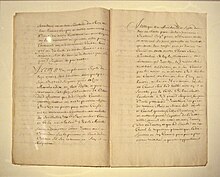The Ottoman Empire, which spanned from the late 13th century until the early 20th century, was one of the most powerful and enduring empires in history. Central to its administration and longevity was a sophisticated system of taxation that funded its vast bureaucracy, military endeavors, and public works. This article delves into the methods of taxation employed by the Ottomans and examines the economic and social impacts these policies had on the empire and its subjects.
Taxation in the Ottoman Empire: An Overview of Methods
The Ottoman Empire utilized a multifaceted taxation system that was both intricate and adaptive, reflecting the diverse and expansive nature of its territories. One of the primary methods of taxation was the "tithe" or "öşür," a tax on agricultural production. Farmers were required to pay a portion of their yield, typically around one-tenth, to the state. This tax was crucial in an agrarian society where the majority of the population was engaged in farming, ensuring a steady revenue stream for the empire.
Another significant form of taxation was the "jizya," a poll tax levied on non-Muslim subjects, known as "dhimmis." This tax was a hallmark of the Ottoman’s system of religious tolerance, allowing non-Muslims to practice their faiths while contributing to the state’s coffers. In return, non-Muslims were exempt from military service, which was mandatory for their Muslim counterparts. The jizya was calculated based on the wealth and income of the individual, ensuring a degree of fairness and proportionality.
In addition to these taxes, the Ottomans also implemented the "timar" system, a form of feudal land tenure. Under this system, land was granted to military officers and officials in return for their service. The holders of these lands, or "timariots," were responsible for collecting taxes from the peasants working the land and forwarding a portion to the central government. This decentralized method of tax collection helped maintain control over distant provinces and ensured the loyalty of the timariots.
Economic and Social Impacts of Ottoman Tax Policies
The economic impacts of the Ottoman taxation system were profound, significantly influencing the empire’s fiscal stability and agricultural productivity. The tithe on agricultural produce incentivized farmers to maximize their yields, knowing that a portion would be claimed by the state. However, this also placed a considerable burden on the peasantry, who often struggled to meet their tax obligations, especially during times of poor harvests or natural disasters. The state’s reliance on agricultural taxes made it vulnerable to fluctuations in crop production, impacting overall economic stability.
Socially, the jizya tax had a dual impact. On one hand, it facilitated a degree of religious tolerance and coexistence within the empire, allowing non-Muslims to maintain their religious practices and communities. On the other hand, it reinforced social stratification, distinguishing between Muslim and non-Muslim subjects. The financial burden of the jizya could be substantial for poorer non-Muslims, potentially leading to economic hardship and social resentment. However, the tax was also a pragmatic tool that integrated diverse populations into the empire’s administrative framework.
The timar system’s impact was multifaceted, influencing both the military and administrative aspects of the empire. By granting land in exchange for military service, the Ottomans ensured a ready supply of troops while decentralizing tax collection. This system fostered local governance and allowed for efficient management of rural areas. However, it also led to potential abuses of power by timariots, who might exploit peasants or underreport tax revenues. Over time, the effectiveness of the timar system waned, contributing to the empire’s administrative challenges and necessitating reforms.
The taxation methods of the Ottoman Empire were integral to its administration and longevity, reflecting a balance between central authority and local governance. While these policies provided the necessary revenue for the state’s functions, they also had significant economic and social repercussions. The intricate tax system fostered agricultural productivity, supported religious diversity, and maintained military strength, yet it also imposed burdens on the peasantry and reinforced social hierarchies. Understanding the nuances of Ottoman taxation offers valuable insights into the empire’s complex governance and its enduring legacy.
